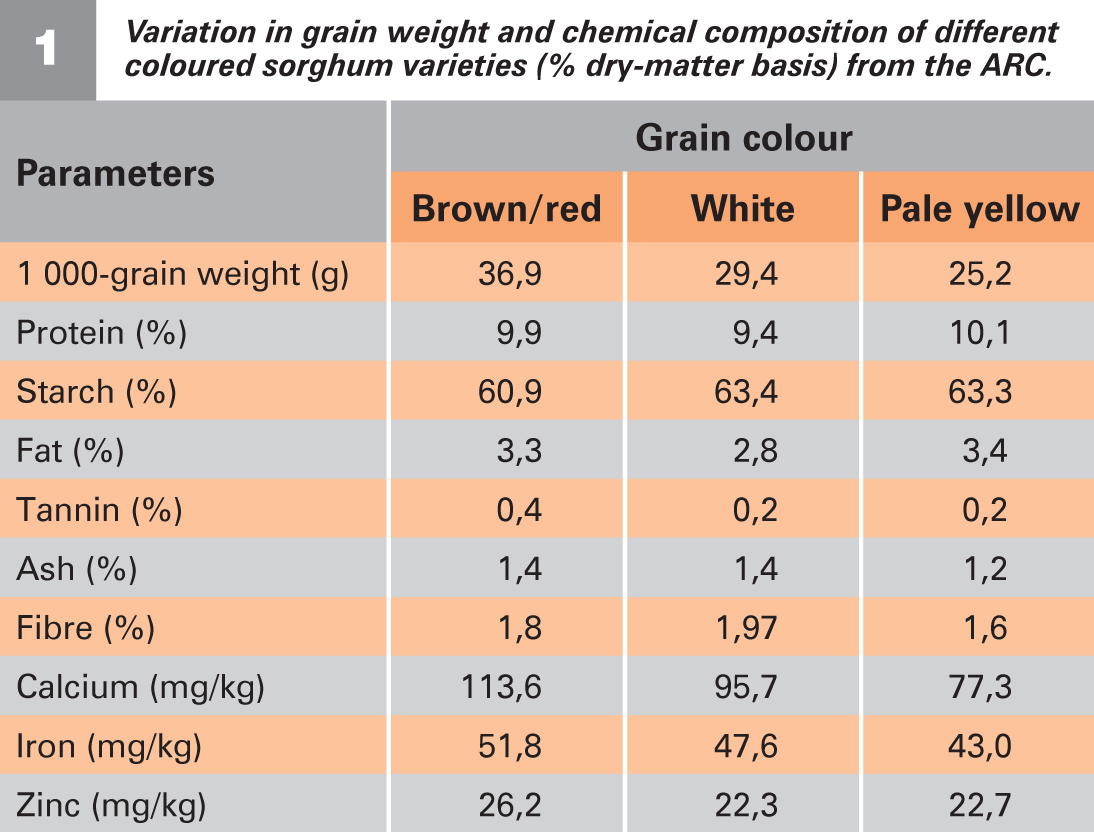May 2025
| DR NEMERA SHARGIE, SENIOR RESEARCHER: PLANT BREEDING, ARC-GRAIN CROPS, POTCHEFSTROOM |
 |
RELYING ON JUST A FEW TYPES OF CROPS MAKES IT HARDER TO TACKLE THE PROBLEMS CAUSED BY CLIMATE CHANGE THAT THREATEN FOOD SECURITY. ONE WAY TO HELP IS TO USE MORE UNDERUSED CROPS (SUCH AS SORGHUM) TO DIVERSIFY FARMING METHODS AND FOOD CHOICES.
Sorghum is among the major traditional basic food crops in Southern Africa. It is processed into a variety of products, both traditional and modern. It can be malted (sprouted grains), decorticated into rice, or milled into coarse and fine meals and flours.
It is an important food source for many people in several African countries. Sorghum grows well in places where the environmental conditions are unfavourable for other crops, making it a key part of their diet and a major source of energy and nutrients for millions of people.
HEALTHY AND WHOLESOME
The interest in sorghum for human foods has recently increased due to its high nutritional potential. It is also considered safe for people with celiac disease, a chronic digestive and autoimmune disorder triggered by gluten, a protein found in wheat, barley and rye.
The trace element content is remarkable, especially magnesium and manganese. It also has a good balance of omega-6 and omega-3 fatty acids. Studies show that eating sorghum can lower blood sugar levels and reduce signs of oxidative stress in both animals and people.
As more people are looking for gluten-free foods and drinks, there have been many studies on sorghum for human consumption. In Western countries, new types of sorghum that are free of tannins have been introduced to create gluten-free options, and similar research has begun in South Africa.
Various products are made from sorghum, such as bread, pasta and biscuits. According to healthline.com, these are some popular sorghum products:
Food-grade sorghum varieties are resilient against both drought and heat. They also have good processing qualities and are nutritious. Regarding its gross nutritional composition, sorghum is very similar to other cereal grains. The chemical composition and physical characteristics of grain samples of 25 sorghum genotypes are presented in Table 1.


Both genetic and environmental factors play a major part in determining the composition of the grain. Starch is the major storage form of carbohydrate in sorghum, and it is gluten-free. This makes sorghum a good substitute for wheat flour for individuals who cannot digest food made from wheat.
The protein in grains is closely linked to their weight and starch levels – when one goes up, the other tends to go down. In sorghum grains, especially the red ones, you’ll find tannins, which have compounds called antioxidants. Antioxidants protect against cell damage, which is a major cause of diseases and aging. Sorghums with high levels of antioxidants are important sources of healthy foods. Non-tannin sorghums, however, generally offer better nutrient digestibility.
The protein and starch in grain sorghum are more slowly digested than those of other cereals, and slower digestibility rates are particularly beneficial for diabetics. Some chemical components (calcium, iron, zinc and fat) and 1 000-grain weight vary among different grain colours.
In summary, sorghum is a non-genetically modified organism (non-GMO) crop, gluten-free and contains a range of beneficial phytochemicals (plant-based bioactive compounds). It is considered an ancient grain that has become a viable option for high-value food niche markets in the developed and developing world.
Sorghum is a highly nutritious staple, yet its affordability is hindered by VAT, making it less accessible to lower-income consumers. The taxation places sorghum at a disadvantage against maize, discouraging consumption and production.
As a result, the industry is in decline, with the lower demand affecting farmers, processors and retailers. If the current trend continues, sorghum production in South Africa may cease altogether, leading to job losses and economic setbacks.
The National Development Plan (NDP) aims to expand agriculture and create one million jobs by 2030. Removing VAT on sorghum aligns with this goal by:
Removing VAT would directly benefit consumers while revitalising a struggling industry. The estimated R238 million in VAT collected annually on sorghum could instead be redirected to strengthen the sector, preserve jobs and ensure long-term sustainability.
Source: Grain SA Economics and Membership services
Publication: May 2025
Section: Pula/Imvula